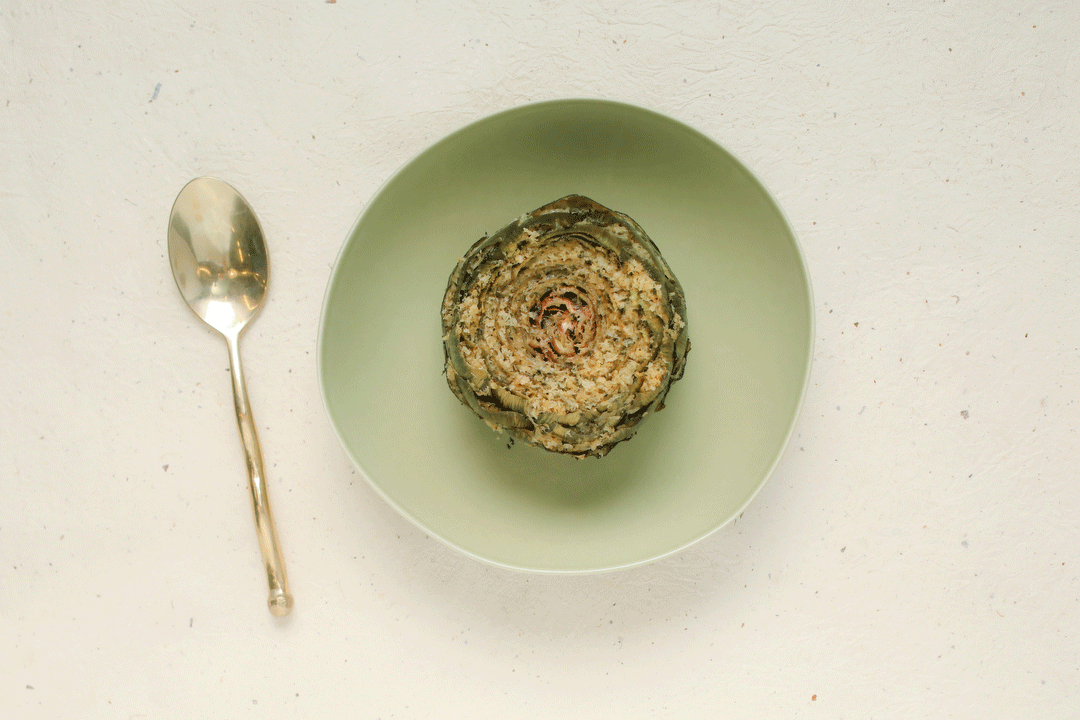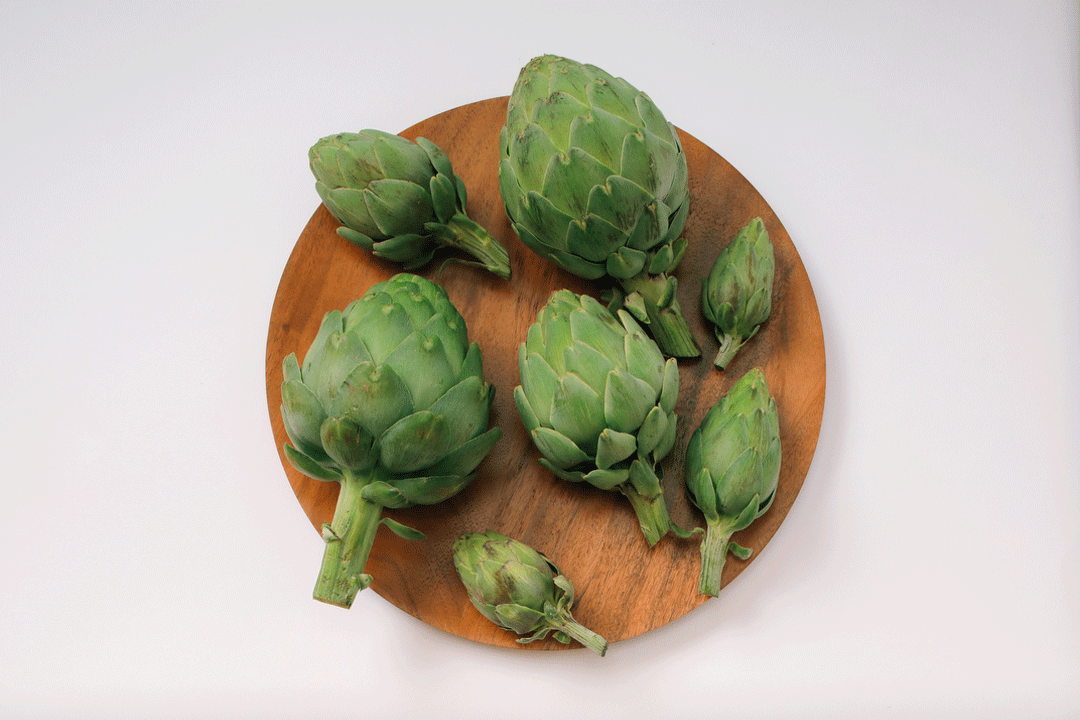
Artichokes are serious business in my family. Not just any artichokes. My grandmother’s stuffed artichokes. This isn’t fancy, froofy food. Rather, it is down-home, roll-up-your-sleeves and eat-with-your-fingers food. Even my mother, who ate potato chips with a spoon, cast aside her cutlery for these Sicilian delicacies.
Grandmother (as we called her) migrated from northern England to the U.S. with her family in 1910. She learned how to make the artichokes from her Sicilian-born sisters-in-law — my great-aunts — who also taught her how to make many of Grandfather’s favorite foods from “back home,” including fried peppers, eggplant Parmigiana and baked ziti.
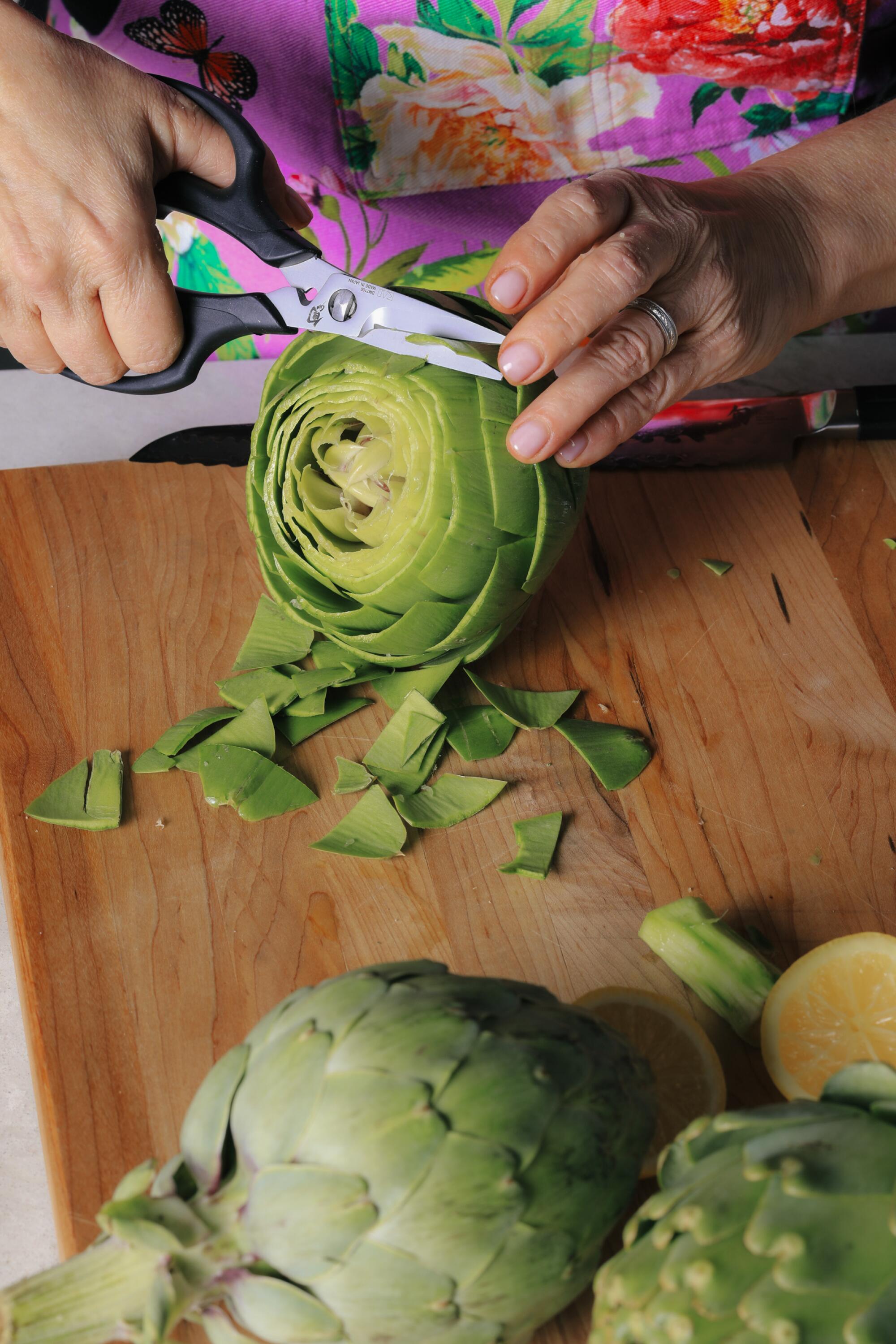
But the artichokes were everyone’s favorite, as was the family ritual of sitting at the kitchen table and slowly, slowly devouring them. Leaf by leaf, our lips and tongues gently took in the creamy-chewy stuffing; our teeth scraped out the soft inside of the bracts before biting off the bottom piece of each, which was like getting a teeny taste of the heart, before tossing the then-naked leaf into the discard pile. We would pull off the smaller, pointy and sharp interior leaves just above the hairy “choke,” and bite off their tender bottoms before stopping to evaluate the choke for tenderness. (Many people discard these parts even before cooking the artichokes, but it is often very tender and the “hairs” are often supple and moist, with a good millimeter or two of the heart stuck to the bottom, which we were not willing to waste.) Finally arriving at the heart was cause for pause — either to crow (if it was large) or to cry “no fair” (if unusually small) — before cutting into the tender bottoms and dabbing at any remaining crumbs and juices as though those artichokes were to be our last supper.
Whether for a family celebration or a casual visit, Grandmother usually brought at least a few artichokes — always stuffed — along with her other treats. And when Grandmother was doling out artichokes, it was not uncommon to hear my brother and me “discussing” how they should be divided among us. After years of refereeing these often-heated arguments, my father finally devised the one-cuts-the-other-chooses policy. If an artichoke was to be divided, one child would cut it and the other would choose which portion they would like. If there was one small artichoke and one large artichoke, each would be divided and shared per that method. (It’s no surprise that we learned to cut with surgeon-like skill.)
Sadly, there came a day when Grandmother’s arthritis and Alzheimer’s got the best of her and the artichokes were no more. Worse, no one had documented the recipe or even watched her make them.
While there were no written instructions, Grandmother had, on occasion, related the ingredients and methodology to us. After a few years of artichoke drought, hoping that I remembered correctly, I tried making them. They were delicious, but they weren’t the same. My brother had a similar experience. Reminiscing at her funeral, more than 20 years after Grandmother had stuffed her last artichoke, it became clear that unbeknownst to one another, our cousins — all of her grandchildren — also were trying to duplicate her artichokes, all to no avail. We each came close, but none of ours were exactly like hers.
Inspired by the recent onset of the spring artichoke season, I decided to give Grandmother’s artichokes another try. With nobody left to confirm or deny whether I have truly nailed them, I can’t say for sure whether I have actually done so, but I can say that if not, I have come remarkably close. They have the right balance of stuffing components and the texture — moist but not soggy or oily — is correct. They taste to me of childhood and transport me to that gold-specked, white Formica kitchen table of my youth, the four of us at our designated places, silently sucking on our artichoke leaves. (We were that busy eating our all-time favorite food.)
While the flavors are pretty darned close if not spot on, I have modified the cooking method. After trimming the artichokes, Grandmother par-boiled them, stuffed them and then baked them. I wanted to simplify the process and perhaps reduce the dirty-dish pile.
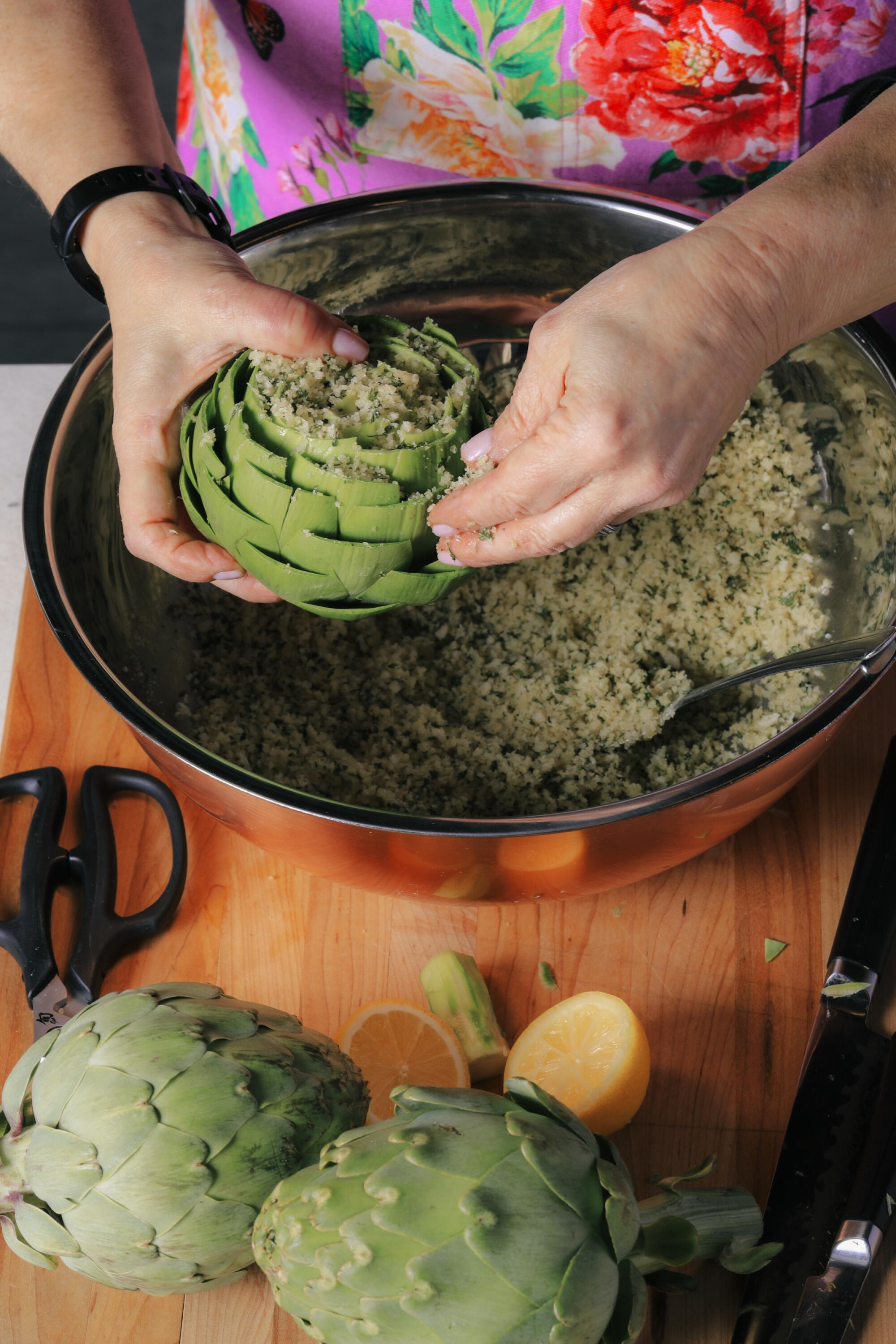
Always looking for an excuse to use my multicooker, the first thing I tried was pressure cooking rather than par-boiling the artichokes. Indeed, making them in the pressure cooker was faster and elicited creamy, tender hearts, but I soon realized that because of artichokes’ variability (some are gigantic, some are small, some are more fibrous), it is nearly impossible to implement a standard cooking time for them.
Some research revealed a method that called for stuffing the artichokes while still raw and then cooking them over steam before briefly finishing them in the oven. I loved the idea of eliminating a step and was thrilled with the result. The steaming ensured that the stuffing was nicely moistened throughout. After the steam bath, a few minutes in the oven dried them out just a bit and gave the tops of the leaves a nice golden touch.
I tried a few approaches to the stuff-steam-bake technique and found that a steamer basket set in a Dutch oven produced the best result. (Pressure cooking the stuffed artichokes in the multicooker worked, though here too the results were inconsistent, even among artichokes of similar size — and the method required an additional baking dish for the final step.)
Having decided on the cooking method, I turned to the stuffing: breadcrumbs, Romano cheese, garlic, parsley, salt and pepper. Grandmother used dried parsley and granulated garlic. I tried upgrading by using fresh instead of dried. Admittedly, the mincing and chopping were not simpler and, ironically, the results were good but not necessarily better. It was difficult to evenly distribute the fresh, grated garlic in the breadcrumb and cheese mixture and once cooked, the difference between fresh parsley and dried was inconsequential. So I kiboshed fresh garlic and fresh parsley was out too.
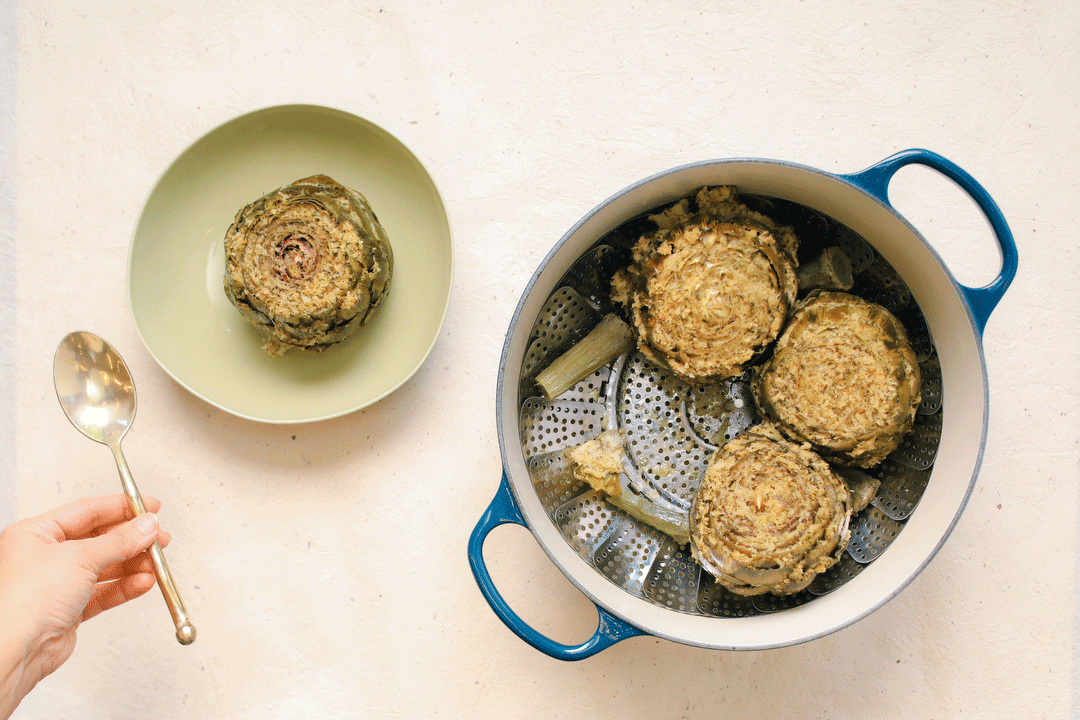
As for the breadcrumbs, I learned that fresh ones are wonderful but not necessary. Also, panko worked better than “regular” breadcrumbs. On the gluten-free side, I found it important to identify the source of the “breadcrumbs.” Those made from potato flakes and potato starch were very gummy, but those made from rice products, such as Kikkoman’s gluten-free panko, gave a much better result.
The real stuffing game changer was moistening it with olive oil before filling the artichokes. A few tablespoons to bring it to the consistency of wet, grainy sand made the stuffing process easier and also elicited a texture just like Grandmother’s, which was a big win. With that worked out, the precise ratios of the stuffing ingredients became less critical — though I do believe I also found the right balance of bread to cheese to garlic to salt (and that the parsley is more about visual appeal than actual flavor).
Almost 40 years later, Grandmother’s artichokes are back on the table, though with both my father and brother gone, the ritual is not quite the same and emotions around them don’t run quite so high. Regardless, I will always be grateful that my English grandmother learned to cook from her Sicilian sisters-in-law rather than her British sisters. I can’t imagine the path my life would have taken had I grown up eating jellied eels, black pudding and mutton rather than stuffed artichokes.
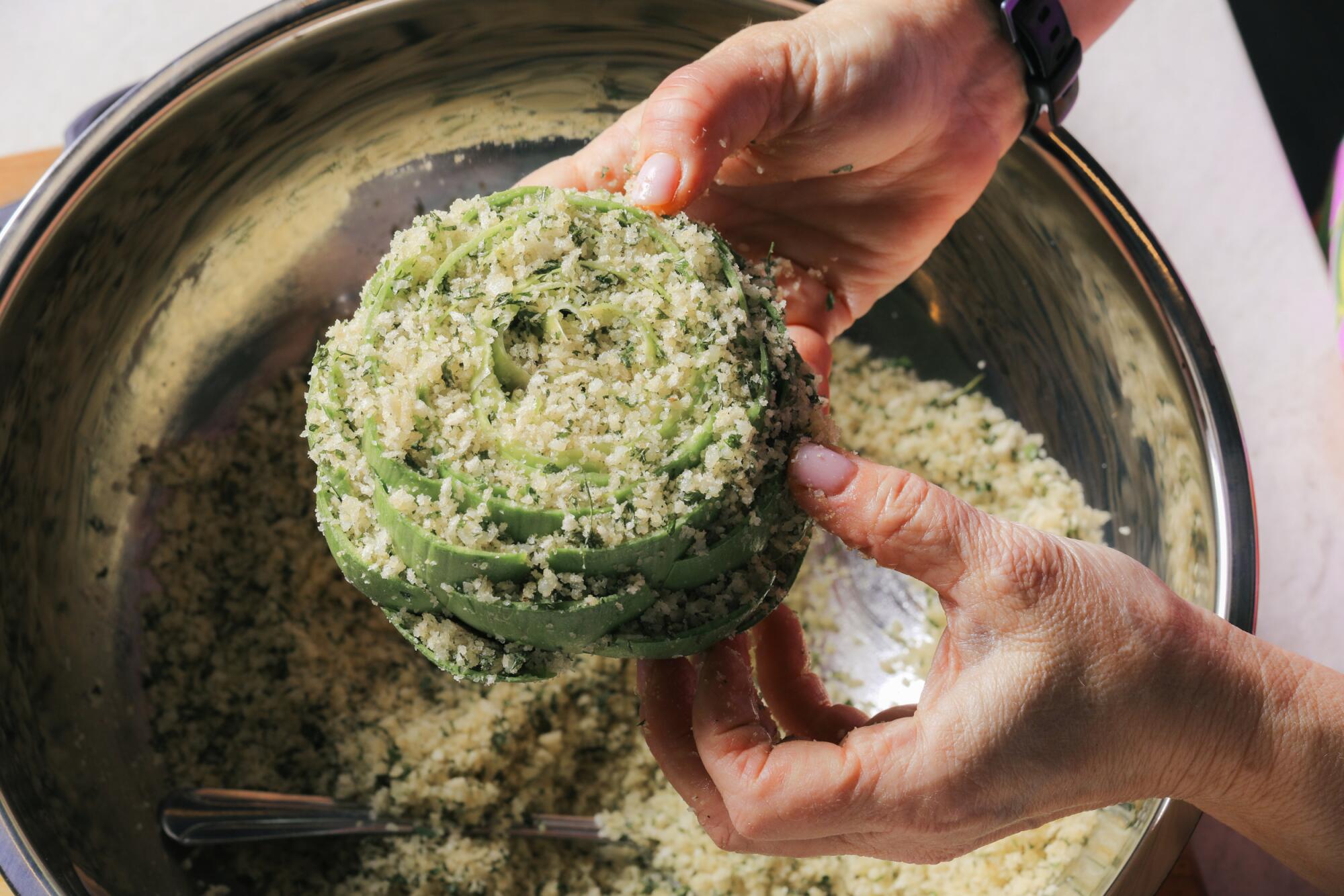
Grandmother's Sicilian-style stuffed artichokes (and how to trim them)
More to Read
Eat your way across L.A.
Get our weekly Tasting Notes newsletter for reviews, news and more.
You may occasionally receive promotional content from the Los Angeles Times.
